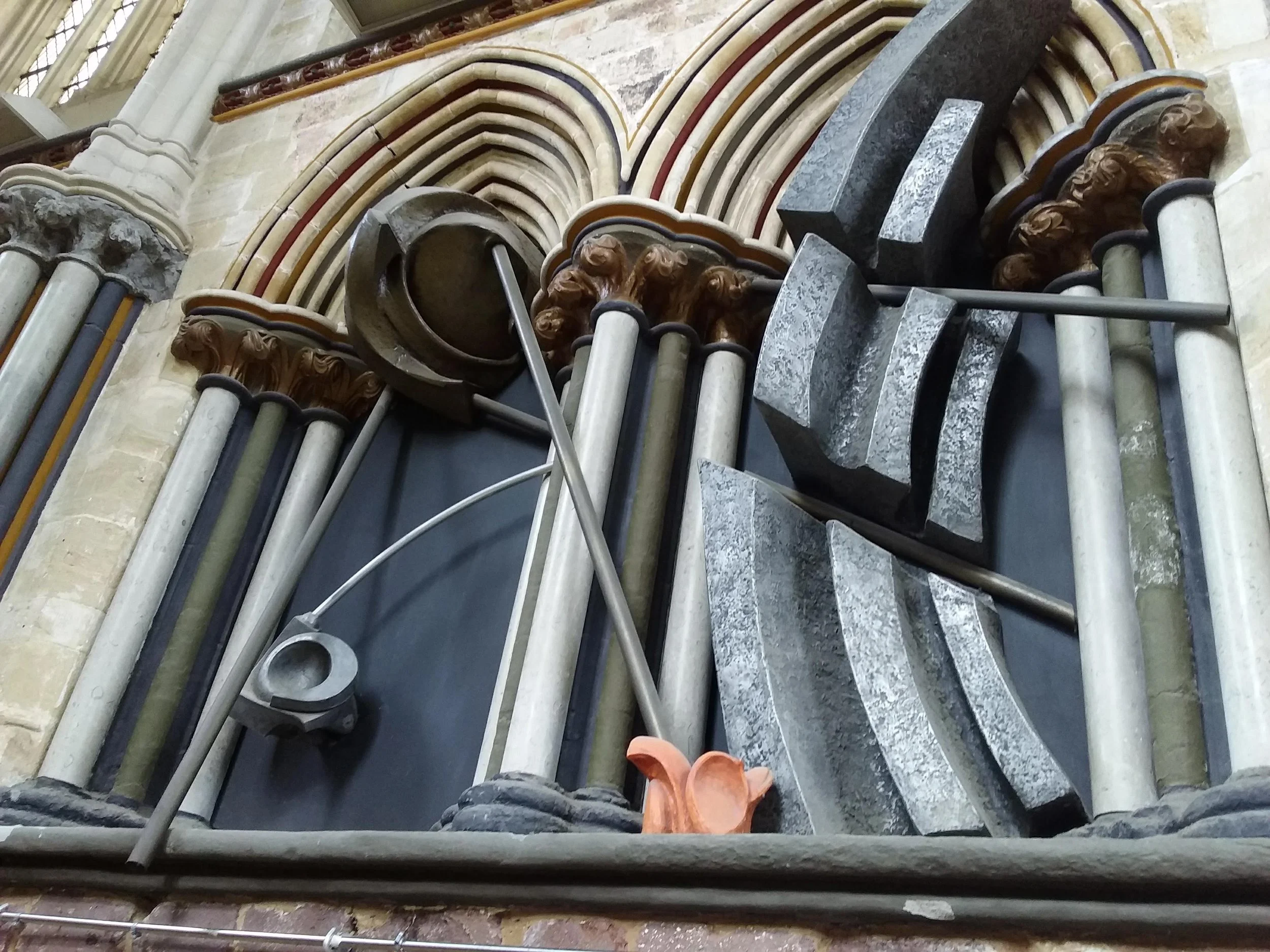Kenneth Carter: The Testament Sculptures











Title: The Testament Sculptures
Artist: Kenneth Carter (1928 – 2007)
Location: Exeter Cathedral (C of E)
Date: 1969-74
Nominated by Jill Howitt: ‘My interest in Kenneth Carter is as a former Fine Art student at Exeter College of Art and Design and as a tutor at the Art School in Hull. Carter taught at both colleges and whilst in Hull produced six carved abstract stone panels for Queens Gardens which I’ve researched as an example of public art in northern cities. I was excited to find out about the Carter reliefs in Exeter Cathedral. In adding my voice to arguments for keeping The Testament Sculptures in The Chapter House I highlight their unique narrative, visual, and experiential qualities as well as issues around taste, style, and purpose.
I begin by considering the ‘inbetweeness’ of the sculptures. This quality creates intrigue and engagement and invites conversation and debate. ‘Inbetweeness’ is highlighted in the siting of the work in the Chapter House – between the religious interior of the Cathedral and the secular space outside. In this way the sacred is brought into the everyday and vice versa.
In visual terms the relief elements in the niches have depth and presence as if they could peel off the walls and into the room. They lie between relief and sculpture – maybe between two and three dimensions. Moreover, the representations range from abstract to figurative and this links to an interplay between man and nature. The more abstract representations are of earth, water, light, dark (before the creation) whilst the figurative elements represent the annunciation, the nativity, the baptism, and the resurrection. The depictions of the world before/beyond man are especially important given the current nature and environmental challenges we face. There are also contrasts between conscious and unconscious, and between hope and despair. Carter talks about his own mental health struggles – again a crucial issue faced by many today. The work is packed with imagery and themes which trigger responses and conversation. Of course, Carter had his own intended meanings but each viewer can make their own and in that way the work lives on.
There are concerns regarding the ‘Brutalist’ look of the work but of course styles go in and out of fashion. Art doesn’t always have to please – something difficult or unexpected can be meaningful. After all some of these themes (darkness, death, and resurrection) are brutal and powerful and maybe the purpose of their representation is to provoke as much as to decorate. What we first see is an appearance with a sense there is more beneath the surface. Art that is unexpected/incongruous can surprise us into new ways of seeing.
I understand that there are plans to re-site the sculptures. This raises significant art history debates about site-specificity. Many argue that removing a work from the place/space it was made for diminishes it. Site-specific work enters into conversation with its immediate and local environment. Moreover, the sculptures have been in the Cathedral for 50 years and as such are part of people’s memories and experiences. The relationships between art, people, and place become enmeshed over time. Carter invites a particular journey around and between the sculptures through their arrangement and relationships. This interaction and experience would be difficult to replicate elsewhere.’
About Kenneth Carter: Born in Hull, Kenneth Carter’s career began as a teacher at Hull College of Art and later as principal lecturer at Exeter College of Art. He created six carved stone panels in his home town of Hull for the Cities Civic Centre Gardens before giving up teaching in 1970 to concentrate on The Testament Sculptures.
He later moved to the village of Lympstone in Devon where he set up his studio together with his family home. He produced predominantly figurative works, mostly modelled in clay and cast in bronze.
He was a fellow of the Royal Society of British Sculptors and exhibited regularly. In 1997 Carter was honoured for his contribution to sculpture in the region with an honorary doctorate from Plymouth University.
Further Information
See Kenneth Carter’s Testament Sculptures on the Ecclesiart map here.
